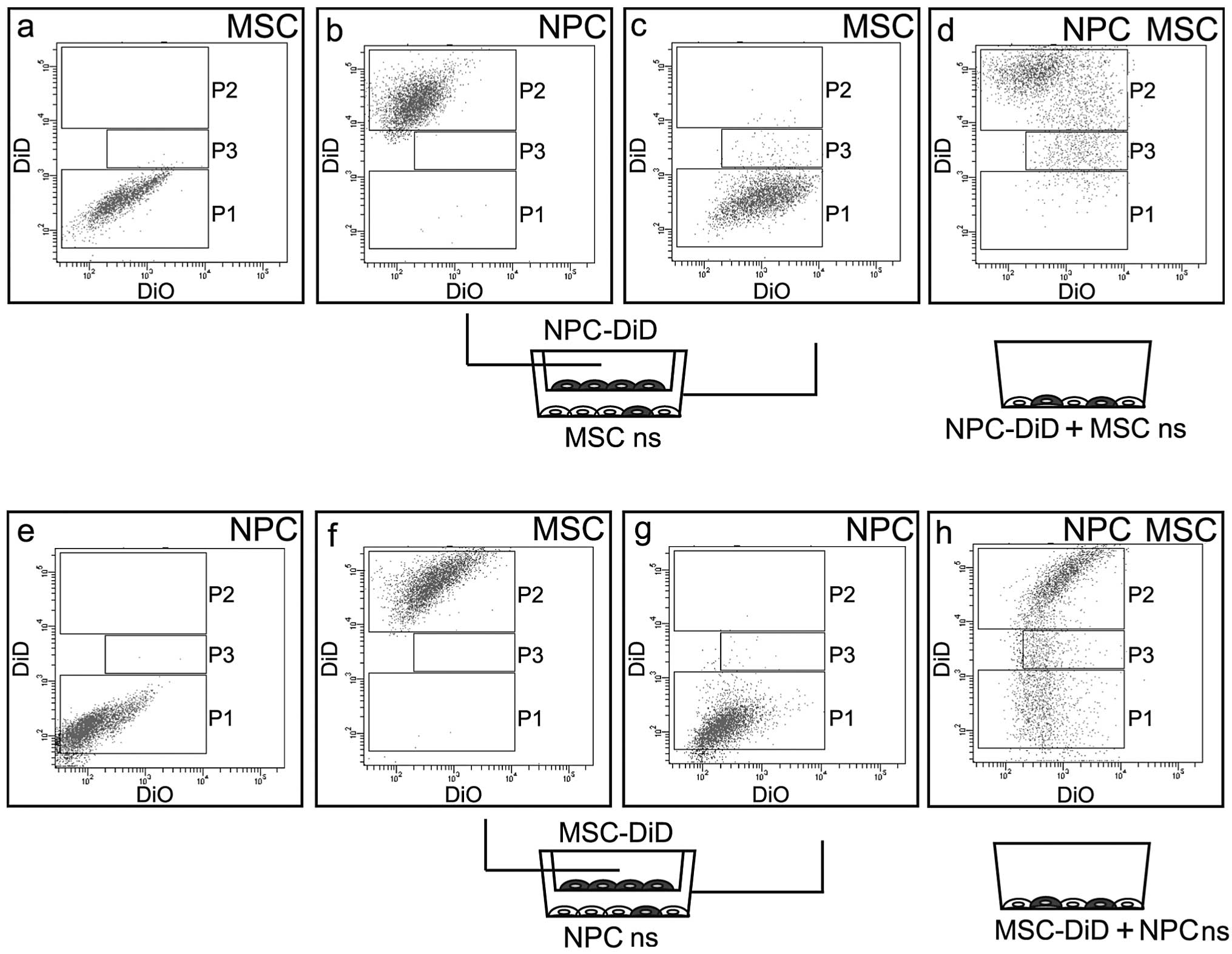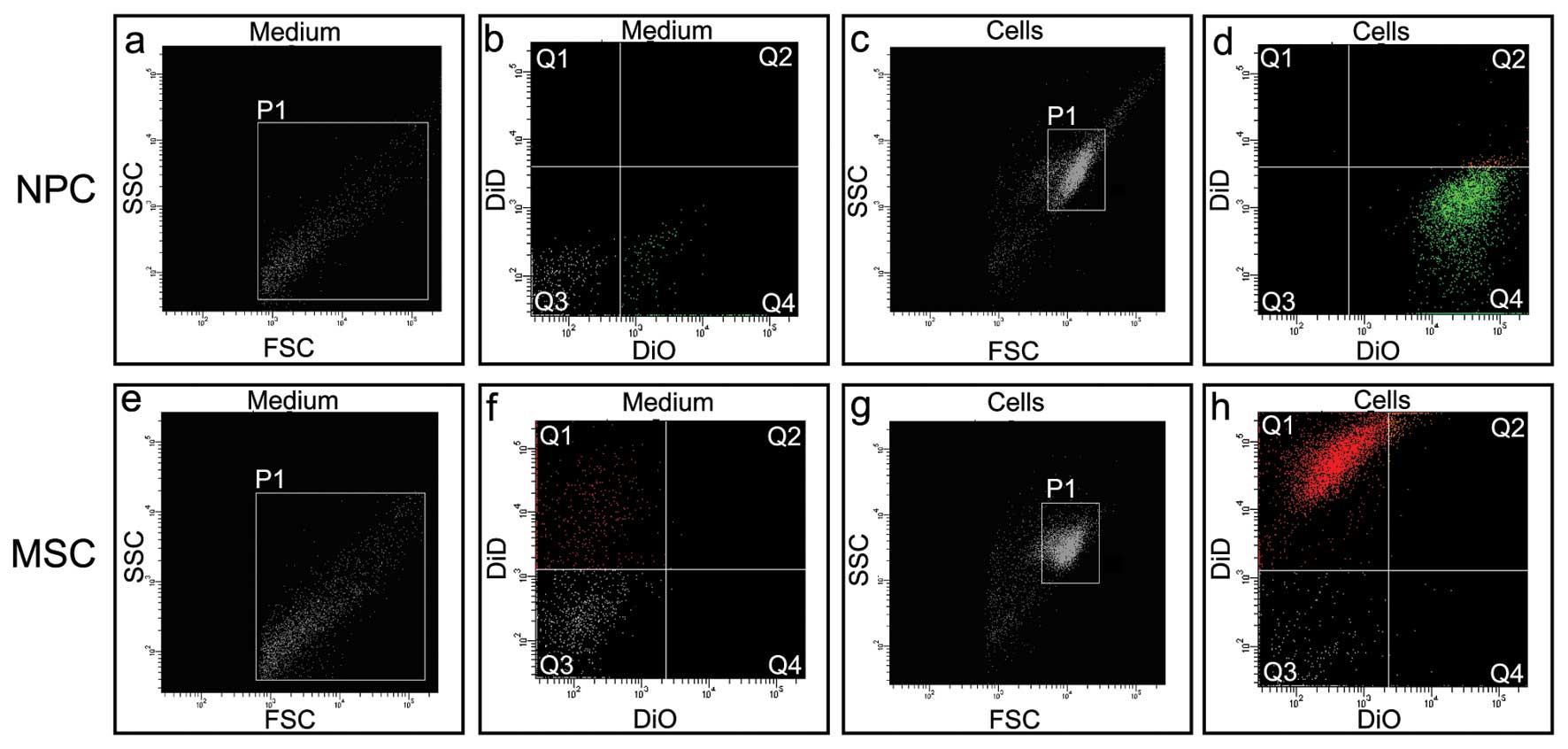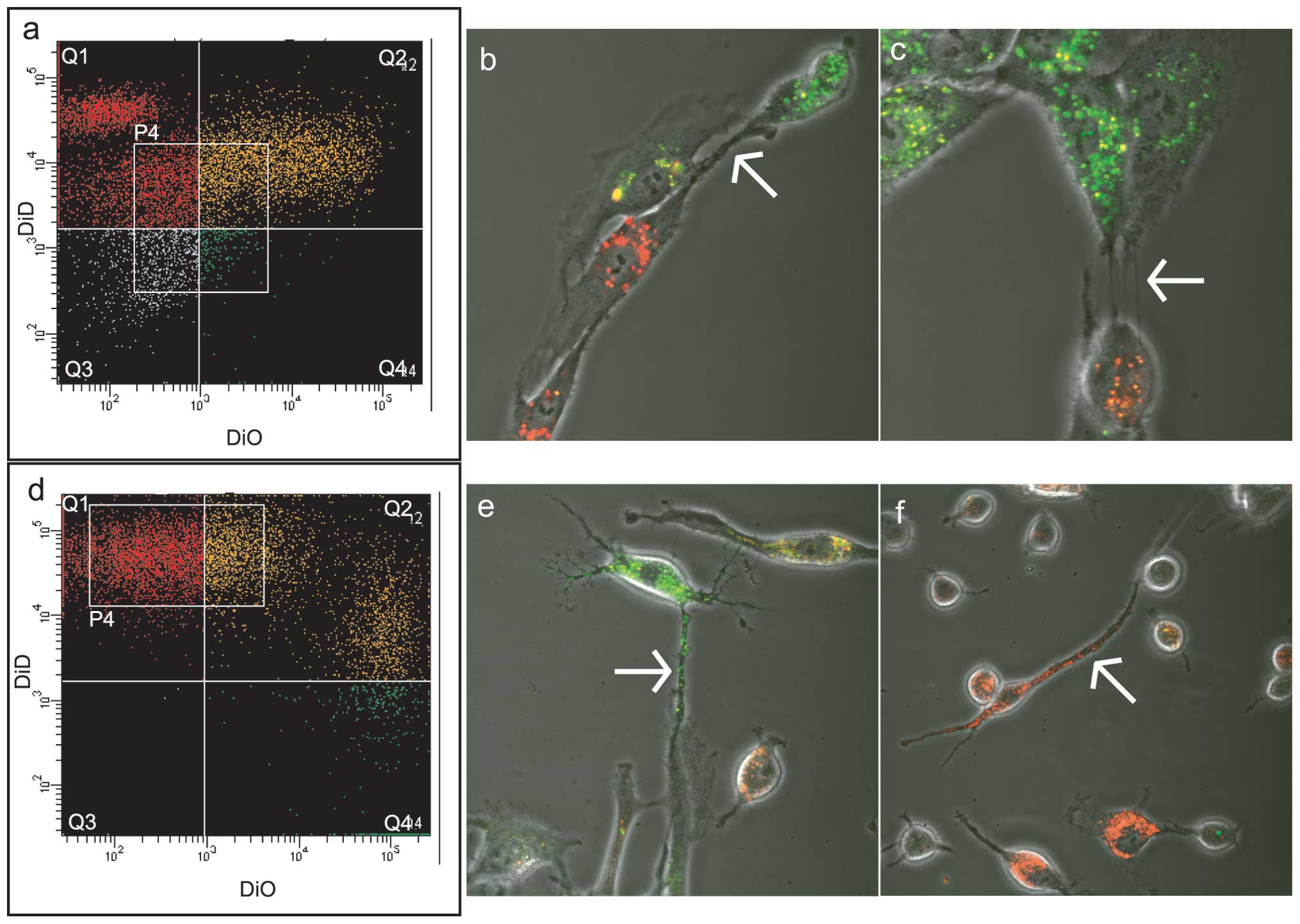|
1
|
Roberts S, Evans H, Trivedi J and Menage
J: Histology and pathology of the human intervertebral disc. J Bone
Joint Surg Am. 88(Suppl 2): 10–14. 2006. View Article : Google Scholar
|
|
2
|
Yamamoto Y, Mochida J, Sakai D, et al:
Upregulation of the viability of nucleus pulposus cells by bone
marrow-derived stromal cells: significance of direct cell-to-cell
contact in coculture system. Spine (Phila Pa 1976). 29:1508–1514.
2004. View Article : Google Scholar
|
|
3
|
Wei A, Chung SA, Tao H, et al:
Differentiation of rodent bone marrow mesenchymal stem cells into
intervertebral disc-like cells following coculture with rat disc
tissue. Tissue Eng Part A. 15:2581–2595. 2009. View Article : Google Scholar
|
|
4
|
Niu CC, Yuan LJ, Lin SS, Chen LH and Chen
WJ: Mesenchymal stem cell and nucleus pulposus cell coculture
modulates cell profile. Clin Orthop Relat Res. 467:3263–3272. 2009.
View Article : Google Scholar : PubMed/NCBI
|
|
5
|
Le Visage C, Kim SW, Tateno K, Sieber AN,
Kostuik JP and Leong KW: Interaction of human mesenchymal stem
cells with disc cells: changes in extracellular matrix
biosynthesis. Spine (Phila Pa 1976). 31:2036–2042. 2006.
|
|
6
|
Richardson SM, Walker RV, Parker S, et al:
Intervertebral disc cell-mediated mesenchymal stem cell
differentiation. Stem Cells. 24:707–716. 2006. View Article : Google Scholar : PubMed/NCBI
|
|
7
|
Yang SH, Wu CC, Shih TT, Sun YH and Lin
FH: In vitro study on interaction between human nucleus pulposus
cells and mesenchymal stem cells through paracrine stimulation.
Spine (Phila Pa 1976). 33:1951–1957. 2008. View Article : Google Scholar : PubMed/NCBI
|
|
8
|
Vadalà G, Studer RK, Sowa G, et al:
Coculture of bone marrow mesenchymal stem cells and nucleus
pulposus cells modulate gene expression profile without cell
fusion. Spine (Phila Pa 1976). 33:870–876. 2008.PubMed/NCBI
|
|
9
|
Strassburg S, Richardson SM, Freemont AJ
and Hoyland JA: Co-culture induces mesenchymal stem cell
differentiation and modulation of the degenerate human nucleus
pulposus cell phenotype. Regen Med. 5:701–711. 2010. View Article : Google Scholar : PubMed/NCBI
|
|
10
|
Strassburg S, Hodson NW, Hill PI,
Richardson SM and Hoyland JA: Bi-directional exchange of membrane
components occurs during co-culture of mesenchymal stem cells and
nucleus pulposus cells. PLoS One. 7:e337392012. View Article : Google Scholar : PubMed/NCBI
|
|
11
|
Gerdes HH, Rustom A and Wang X: Tunneling
nanotubes, an emerging intercellular communication route in
development. Mech Dev. 131:381–387. 2013. View Article : Google Scholar : PubMed/NCBI
|
|
12
|
Abounit S and Zurzolo C: Wiring through
tunneling nanotubes - from electrical signals to organelle
transfer. J Cell Sci. 125:1089–1098. 2012. View Article : Google Scholar : PubMed/NCBI
|
|
13
|
Horwitz EM, Le Blanc K, Dominici M, et al:
Clarification of the nomenclature for MSC: The International
Society for Cellular Therapy position statement. Cytotherapy.
7:393–395. 2005. View Article : Google Scholar : PubMed/NCBI
|
|
14
|
Huang S, Tam V, Cheung KM, et al: Stem
cell-based approaches for intervertebral disc regeneration. Curr
Stem Cell Res Ther. 6:317–326. 2011. View Article : Google Scholar : PubMed/NCBI
|
|
15
|
Xie LW, Fang H, Chen AM and Li F:
Differentiation of rat adipose tissue-derived mesenchymal stem
cells towards a nucleus pulposus-like phenotype in vitro. Chin J
Traumatol. 12:98–103. 2009.PubMed/NCBI
|
|
16
|
Feng G, Jin X, Hu J, et al: Effects of
hypoxias and scaffold architecture on rabbit mesenchymal stem cell
differentiation towards a nucleus pulposus-like phenotype.
Biomaterials. 32:8182–8189. 2011. View Article : Google Scholar : PubMed/NCBI
|
|
17
|
Gantenbein-Ritter B, Benneker LM, Alini M
and Grad S: Differential response of human bone marrow stromal
cells to either TGF-β(1) or rhGDF-5. Eur Spine J. 20:962–971.
2011.
|
|
18
|
Morigele M, Shao Z, Zhang Z, et al: TGF-β1
induces a nucleus pulposus-like phenotype in Notch 1 knockdown
rabbit bone marrow mesenchymal stem cells. Cell Biol Int.
37:820–825. 2013.
|
|
19
|
Yuan M, Leong KW and Chan BP:
Three-dimensional culture of rabbit nucleus pulposus cells in
collagen microspheres. Spine J. 11:947–960. 2011. View Article : Google Scholar : PubMed/NCBI
|
|
20
|
Leckie SK, Sowa GA, Bechara BP, et al:
Injection of human umbilical tissue-derived cells into the nucleus
pulposus alters the course of intervertebral disc degeneration in
vivo. Spine J. 13:263–272. 2013. View Article : Google Scholar : PubMed/NCBI
|
|
21
|
Niu X, Gupta K, Yang JT, Shamblott MJ and
Levchenko A: Physical transfer of membrane and cytoplasmic
components as a general mechanism of cell-cell communication. J
Cell Sci. 122:600–610. 2009. View Article : Google Scholar : PubMed/NCBI
|
|
22
|
Oren-Suissa M and Podbilewicz B: Evolution
of programmed cell fusion: common mechanisms and distinct
functions. Dev Dyn. 239:1515–1528. 2010. View Article : Google Scholar : PubMed/NCBI
|
|
23
|
Vallabhaneni KC, Haller H and Dumler I:
Vascular smooth muscle cells initiate proliferation of mesenchymal
stem cells by mitochondrial transfer via tunneling nanotubes. Stem
Cells Dev. 21:3104–3113. 2012. View Article : Google Scholar : PubMed/NCBI
|
|
24
|
Lee TH, D’Asti E, Magnus N, Al-Nedawi K,
Meehan B and Rak J: Microvesicles as mediators of intercellular
communication in cancer - the emerging science of cellular
‘debris’. Semin Immunopathol. 33:455–467. 2011.PubMed/NCBI
|
|
25
|
Chazotte B: Labeling membranes with
carbocyanine dyes (Dils) as phospholipid analogs. Cold Spring Harb
Protoc. 2011:pdb prot5555. 2011. View Article : Google Scholar : PubMed/NCBI
|
|
26
|
Plotnikov EY, Khryapenkova TG, Galkina SI,
Sukhikh GT and Zorov DB: Cytoplasm and organelle transfer between
mesenchymal multipotent stromal cells and renal tubular cells in
co-culture. Exp Cell Res. 316:2447–2455. 2010. View Article : Google Scholar
|
|
27
|
Chen EH and Olson EN: Unveiling the
mechanisms of cell-cell fusion. Science. 308:369–373. 2005.
View Article : Google Scholar : PubMed/NCBI
|
|
28
|
Ferrand J, Noël D, Lehours P, et al: Human
bone marrow-derived stem cells acquire epithelial characteristics
through fusion with gastrointestinal epithelial cells. PLoS One.
6:e195692011. View Article : Google Scholar
|
|
29
|
Chernomordik LV and Kozlov MM: Membrane
hemifusion: crossing a chasm in two leaps. Cell. 123:375–382. 2005.
View Article : Google Scholar : PubMed/NCBI
|
|
30
|
Nincheri P, Luciani P, Squecco R, et al:
Sphingosine 1-phosphate induces differentiation of adipose
tissue-derived mesenchymal stem cells towards smooth muscle cells.
Cell Mol Life Sci. 66:1741–1754. 2009. View Article : Google Scholar : PubMed/NCBI
|
|
31
|
Yang HJ, Jung KY, Kwak DH, et al:
Inhibition of ganglioside GD1a synthesis suppresses the
differentiation of human mesenchymal stem cells into osteoblasts.
Dev Growth Differ. 53:323–332. 2011. View Article : Google Scholar : PubMed/NCBI
|
|
32
|
Yang L, Chang N, Liu X, et al: Bone
marrow-derived mesenchymal stem cells differentiate to hepatic
myofibroblasts by transforming growth factor-β1 via sphingosine
kinase/sphingosine 1-phosphate (S1P)/S1P receptor axis. Am J
Pathol. 181:85–97. 2012.PubMed/NCBI
|
|
33
|
Sundelacruz S, Levin M and Kaplan DL:
Membrane potential controls adipogenic and osteogenic
differentiation of mesenchymal stem cells. PLoS One. 3:e37372008.
View Article : Google Scholar
|
|
34
|
Essentials of Stem Cell Biology. Lanza R,
Gearhart J, Hogan B, Melton D, Pedersen R, Donnall Thomas E,
Thomson AJ and Wilmut I: Academic Press; pp. 105–110. 2009
|












